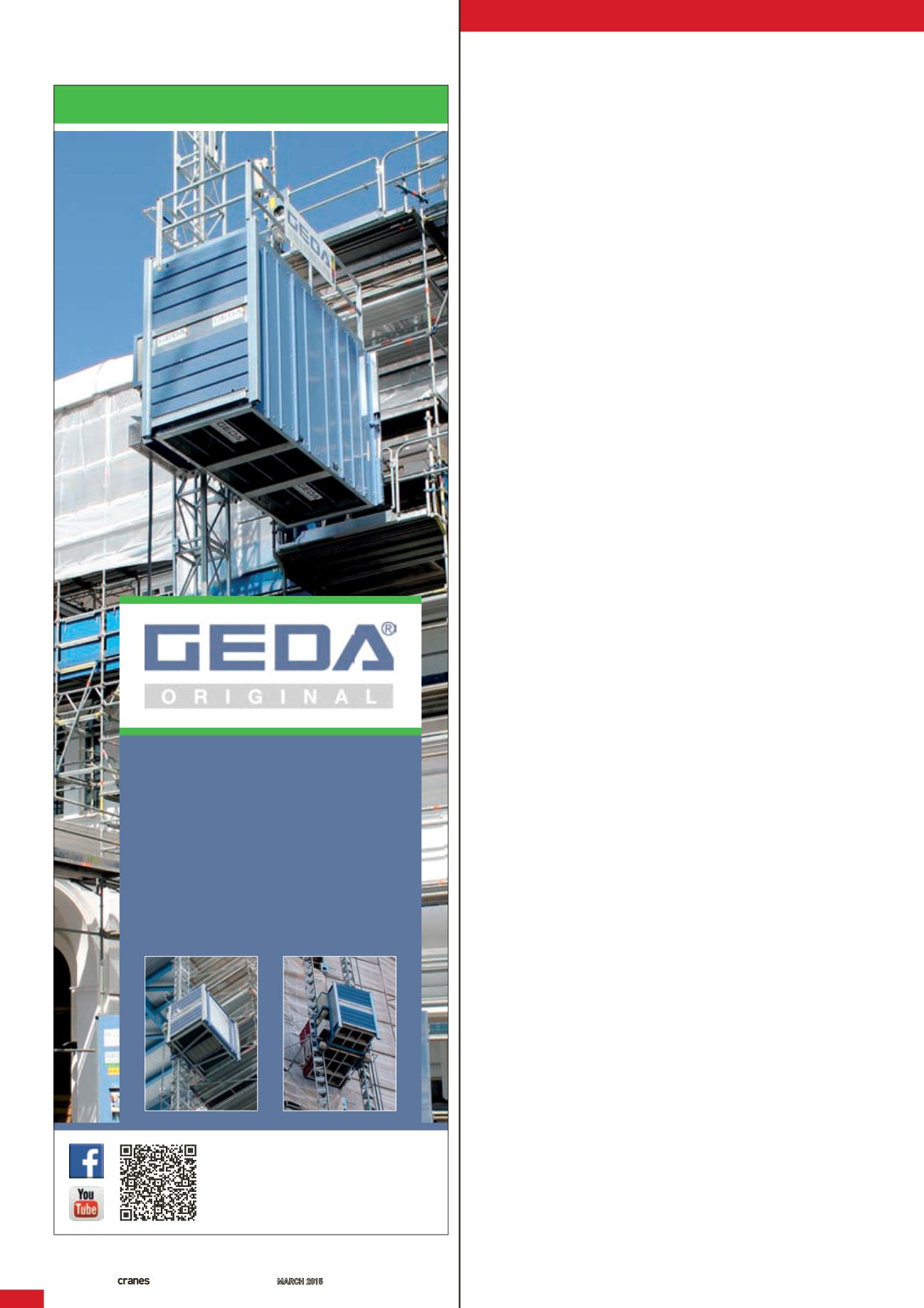
INTERNATIONAL ANDSPECIALIZED TRANSPORT
■
MARCH 2015
30
INTERVIEW
endupas expected formost
manufacturers. “I think2014
was an interestingyear for a
lot of cranemanufacturers,
specifically theNorthAmerican
market. Theyear startedout
with thepolar vortex in theU.S.
Theprimarymarketsof rough
terrains andboom truckswere
affected.Comingout of that
winter, themarket just didn’t
pickup, and thatwas a surprise
toa lot ofmanufacturers. The
rough terrainmarketwas
downover 20% for theyear.
Economistspredictedgrowth
innon-residential construction
and forhighwaywork topick
up.Noneof thatmaterialised.”
Whenall thatwas
happening,Manitowocwas
starting toput in its “agility
roadmaps.”Evengoing
into2015, however, he said
projections arenot as good
ashewould like them tobe.
“Lookingat theprojections
fromwhat I call theheavies,
Caterpillar’soutlook isbad,
and someof that isbasedon
oil prices.Other construction
equipmentmanufacturers are
closingplants.”
He said it’s time tobe
cautious. “A lackof clarity
drives indecision. Peoplewill sit
andwatch to seewhat happens.
So I think the advantagewe
have is that as aglobal company
we are in somemarkets that
aregoing tobegoodand
unfortunately, offset by someof
thebigmarkets that aregoing
tobedown. If theoil prices
drag that down, and cranes
playabig role inoil andgas
exploration, I think it’s going to
be anotherbumpyyear.”
Commentingona “mixed”
global cranemarket,Weyers
says, “We still see life inmarkets
like theMiddleEast and
Kuwait andQatar. It’snot so
much just theoil, but there are
infrastructure and rail projects.
There’s a lot of construction
activity inVietnamand
Myanmar. Singaporehas a
lot of infrastructureprojects.
Germany is showing
signsof life in thenon-
construction sector.”
On theotherhand, he said
that themarkets inFrance
and Italyaredead. In the
TEMPORARY INSTALLATIONS
MULTILIFTRange
The GEDA MULTILIFT Range sets new
standards regarding height access. These
compact heavy weights can handle almost
any challengeon the construction site, thanks
to their uniquequality and extreme versatility.
Thepre-installedbase unit is delivered as one
unit. Thisensuresa fast andsmoothassembly.
Differentplatformversions, liftingheightsof up
to200manda loadcapacityof up to2,000kg
or 22 persons, prove that the construction
hoists of theGEDAMULTILIFTRange are real
all-rounders.
UK, however, he said there
is activity, primarily in tower
cranes. “Brazil is still going to
bedownagain, for another
year. Theadvantagewehave
inBrazil iswith theplant there
wehavehugemarket share,
even thoughnow it’s a small
market. But thishasbeen
offset byactivity inChile and
Mexico. There arebigprojects
inVenezuela.A lot ofKorean
contractors aredoingwork in
Venezuela. In theU.S., the real
wild cardwill beoil prices.”
New sector
On thedecision to enter
the telescopic crawler crane
market,Weyers says the
companyhasbeen lookingat
NorthandSouthAmerica for a
coupleyears. “I’veknownErich
Sennebogen for 15years, and
we’ve always talkedonandoff
about things theyweredoing
and thingsweweredoing.
Telecrawlers startedout as a
nichemarket, and I think the
versatilityof theproduct has
allowed it to figure into some
moremarkets. Theability forus
to comeoutwith threemodels
at one timemademore sense to
us, and toworkwithapartner
likeSennebogen, that has the
samevalueswehave as far as
thequalityof theproduct and
the level of performance, value
andquality.Marriedup
withourdistributionand
CraneCare, itwas apretty
goodmatch.”
Thedecline inoil prices in
theUnitedStates is a concern,
Weyers says. “Theway Iwould
describe it is that thishasn’t
affected crane sales yet,”he
says. “As longas I’vebeenwith
the company,whenoil prices
get below$60abarrelwe see
exploration slowdownor stop
andnext youwill see thehigher
pricedproductionoil stop, such
as shaleoil,which costsmore
toproduceperbarrel.When
oil prices are at $48or $50a
barrel, you can’tmakemoney.
When it reallygets badyouwill
see the refineries stopdoing the
turnaroundwork. Thatwork
hasbeenpretty strong. But
it’s too early to tell.Will these
prices stayorwill theygo
backup?”
■


